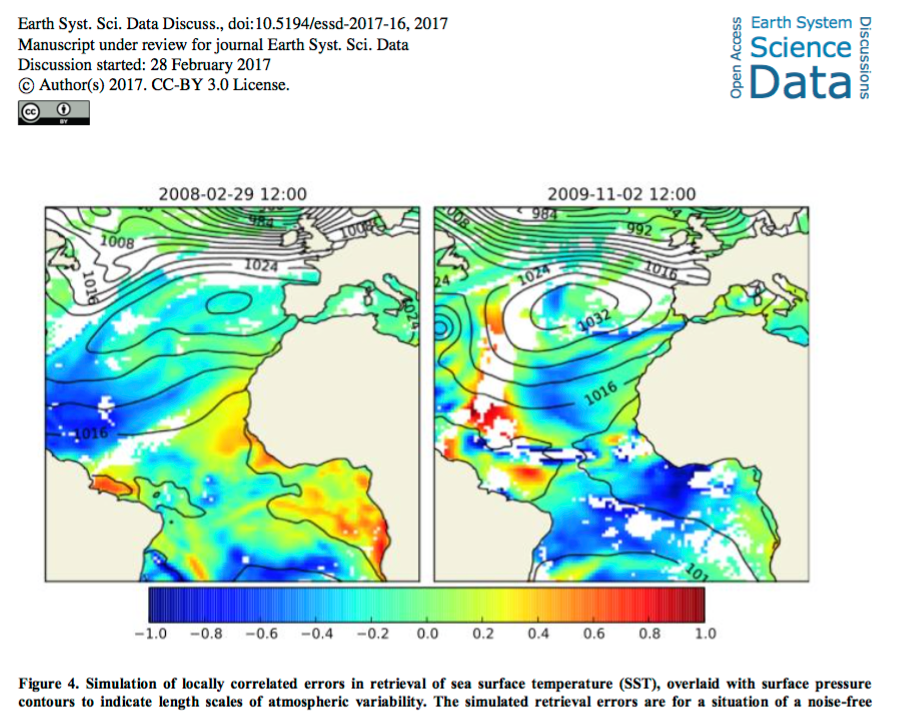- do not flag high-uncertainty data as “bad” if a valid estimate of that high uncertainty is provided;
- instead, use quality flags to indicate the level of confidence in the validity of the provided uncertainty and retrieval assumptions.

Including estimates of uncertainty in climate data records
by Christopher Merchant
A new paper in Earth System Science Data discusses uncertainty in climate data records (CDRs) from Earth Observation. It emerges from the European Space Agency Climate Change Initiative project, and reviews across 11 different essential climate variables the status of including uncertainty information in CDRs. The paper reviews why uncertainty information matters, what it means (including how it is conceptually different to quality), and briefly reviews how uncertainty can be characterised and quantified. The ECVs included are: aerosol optical depth, cloud properties, glacier extent, greenhouse gases, land cover, ocean colour, ozone, soil moisture, sea ice, sea level and sea surface temperature. The varied nature of these variables leads to a wide range of approaches to uncertainty characterisation, which are summarised.. Nonetheless, the paper pulls together a number of recommendations for good practice that the FIDUCEO project would certainly agree with:
1. Make quantitative uncertainty information available within the dataset. (Don’t expect users to find uncertainty information from reading related papers.)
2. Use well-defined metrological concepts, such as “standard uncertainty”, to quantify uncertainty.
3. Provide uncertainty information that discriminates which data are more and less certain. Per-datum uncertainties should be given, if possible, in CDRs where uncertainty varies significantly.
4. Assuming per-datum uncertainty information is provided, avoid redundancy of this information with quality flags:
